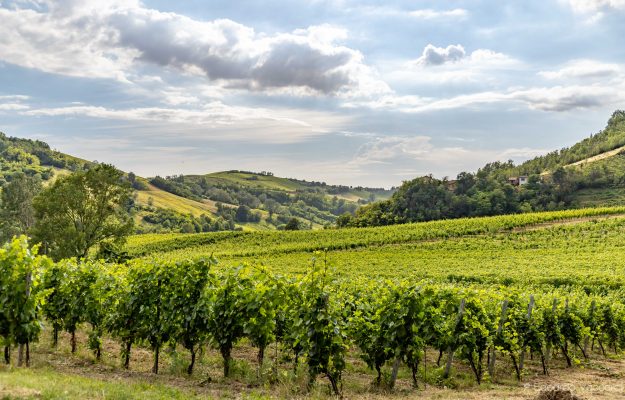The Oltrepò Pavese, with approximately 3,000 hectares, is the third district in the world for hectares of Pinot Noir vineyards and the first one in Italy, accounting for 75% of the national production, and claims this with its wines and with “Oltrepò Terra di Pinot Nero”, the event signed by the Consortium, staged in recent days in Casteggio (Pavia), in the setting of the Antica Tenuta Pegazzera, one of the historic buildings that mark a beautiful territory, made up of gentle hills where the vine draws the landscape together with the area’s forests which, in recent years, has been able to attract important investments from some of the leading brands in Northern Italy viticulture, from Cordero to Tommasi, from Berlucchi to Masi, which will give new propulsion to the notoriety of the territory. The event, which brought together 34 companies, was limited to denomination Pinot Noir wines - Oltrepò Metodo Classico and Pinot Noir Oltrepò Pavese - that are experiencing significant growth. A significant turning point in confirming the value of the collective brand, which has been adopted by an increasing number of businesses in recent years.
The situation of the Oltrepò Pavese is emblematic of the difficulties faced by many denominations, which are not easy to resolve. Grapes are paid little, wine prices and land values are low, and there is a lack of demand for the Oltrepò Metodo Classico Docg in this area, given the massive demand for grapes and sparkling wines to be shipped to the rest of Italy. The lack of appeal of the collective brand for the producers themselves also contributes, who either prefer to stay out of it or, if they claim it, often relegate it to the back label.
Commenting on the state of the art of the Oltrepò Pinot Noir wines, Carlo Veronese, director of the Consortium: “the Oltrepò Pavese denomination is very broad, it recognizes the entire territorial enological tradition, which includes different vines and wines, for a total of 26 million bottles produced. Over the years, the Consortium has been asked by the producers to pursue autonomous denominations such as Bonarda, Sangue di Giuda, Pinot Grigio, Pinot Noir vinified in red, also with the mention of reserve, and the Classic Method (white and rosé), which has been recognized as DOCG since the 2007 harvest, explains Veronese. We are moving towards a greater characterization of the territory in the name of Pinot Noir. For the Oltrepò Docg, without the adjective “Pavese”, a modification of the specifications is underway to highlight the grape variety in the bottle and on the label. The type that includes 70% Pinot Noir will disappear leaving only the 85% version, which already allows for the use of the grape variety’s name on the label”.
Currently, only 560,000 bottles of Classic Method are produced out of a potential total of 2.5 million, based on hectares and wines declared suitable for becoming, while the number of bottles of quality sparkling wine (Vsq) cannot be determined. “According to the labels, the DOCG has grown in recent years”. In the first half of 2023 - underlines Veronese - the increase was over 20%. Large and small companies are converting their VSQ production into DOCG. Here are some examples: Terre d’Oltrepò has embraced the DOCG for all of its production, as has the small Alessio Brandolini agricultural company, sending a strong signal”.
The percentage of rosés in the Oltrepò Metodo Classico is 20%, or just over 100,000 bottles, with 60% using the consortium brand “Cruasé”, which was conceived about fifteen years ago by then-director of the Consortium, Carlo Alberto Panont, who saw rosé as an opportunity for distinction for the Oltrepò’s sparkling wines and predicted the success of pink wines. An intuition founded on a very appropriate and early name, which today, after a period of decline, is regaining favour with producers.
“The increase in quantitative terms of red Pinot Noir (400,000 bottles) and, more importantly, in qualitative terms is recent because the direction has historically been sparkling wine - Veronese concludes - beginning with the first plantings in Rocca de’ Giorgi by Count Carlo Giorgi of Vistarino in 1865. Even in new plants, clones suitable for reds are being considered. We are considering a new structure that would reserve the name Oltrepò for Pinot Noir wines and name the others differently. “Colline Pavesi” is one possibility. But everything remains to be verified”.
Copyright © 2000/2025
Contatti: info@winenews.it
Seguici anche su Twitter: @WineNewsIt
Seguici anche su Facebook: @winenewsit
Questo articolo è tratto dall'archivio di WineNews - Tutti i diritti riservati - Copyright © 2000/2025









































































































































































































